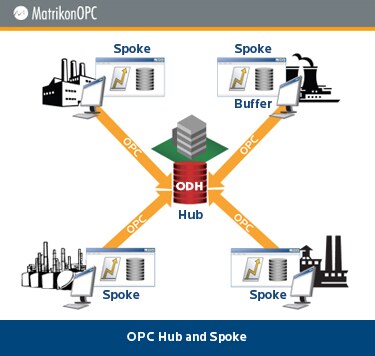|
|
|

|
Essential Data Access for Your Digital Wind Farm
With the promise of clean, green energy - the popularity of wind power is growing, and with it the demand for more wind turbines. Initially managed and operated by the builders, the contractual responsibility of operating and maintaining many of these wind farms is transitioning to the owners. To best manage their remote, geographically dispersed farms, owners need an economical way to both centralize data from all their farms while making it possible for crews working on-site to access key historical wind turbine performance and status data. The challenge owners’ face when trying to access turbine data is three fold: turbine vendors commonly use proprietary data protocols, traditional enterprise historians are expensive, and the remote nature of the wind farms often translates to unreliable, low bandwidth networks. So the question is: how can wind farm data be best utilized at headquarters and at each site?
While the problem is complex, the answer is simple. At the lowest level, it begins with standardizing all communications between wind turbine controllers and third party applications on OPC based technology. By definition, using OPC for data sharing between systems frees each side from having to implement the other side’s native protocol because OPC takes care of this by splitting the communications into an OPC Client side and an OPC Server side. OPC Clients and OPC Servers communicate natively with their respective applications and devices but only share data between each other using OPC messaging. This effectively abstracts away the underlying native protocols.
Having cleared the proprietary data silo hurdle, the next challenge to overcome is the ability to access data locally while ensuring that it is also delivered to the central archive where it will be used by various departments throughout the enterprise. Building on the OPC data access set up in the first step, a combination of standard data management components can be used to easily achieve this. Specifically, a light weight historian like MatrikonOPC Buffer (or OPC Desktop Historian for larger sites) can be used to capture local data and make it available to those who need it onsite. With this in place, people no longer have to tie up precious bandwidth retrieving such data from headquarters since – they have it locally at their fingertips.
Finally, data captured in the local OPC historian needs to be intelligently synchronized with the central data archive. Such database synchronization can be either used as the primary remote-to-central update mechanism or it may be used as a back-up in case real-time updates are interrupted (traditionally called a store-and-forward solution). The OPC component to use to do this is the MatrikonOPC History Link. As its name implies, History Link makes it possible to ‘link’ data archives to make typically complex operations like migrations and synchronizations quick and simple to setup and use.
Setting up a local historian, making it accessible to those who need it locally, and ensuring that your central archive remains synchronized with your local archives is easy.
Click here to discover how you can do it today


| |
|

|